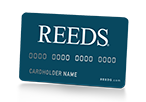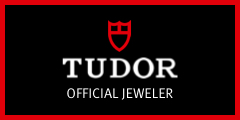This is a demo store. No orders will be fulfilled. (1368487-reeds-pro-web-1.reeds.com)
REEDS Jewelers is proud to offer a large selection of the finest cut diamonds. Discover the most important characteristics to consider when making a diamond purchase. This infographic explains the 4 C’s of diamonds – carat weight, color, clarity, and cut. Find your diamond ring today!

Use the 4 C’s of Buying Diamonds
We understand selecting jewelry is complicated. It’s overwhelming and you’re always wondering if you’re buying the kind of high-quality diamond you expect. We want our customers to trust us and know exactly what it is that they are buying, so we created a guide for buying diamonds. That means when you’re ready to buy a diamond ring or want to add sparkle to your jewelry collection, you will get exactly what you’re looking for. So, let’s start at the beginning: The Four C’s of Diamonds.
Carat
Carat weight is the only standard measurement of the Four C's. One carat equals 1/5 of a gram or .007 of an ounce. Jewelers utilize extremely precise scales to weigh diamonds to hundredths of a carat. Each of these "hundredths" is referred to as a "point". So, a one carat diamond is the same thing as a 100-point diamond, just as a .50 carat diamond equates to a 1/2 carat or 50-point diamond.
Carat weight and diamond size are not the same. Size can actually be greatly affected by the cut. Distance in millimeters across the top of the diamond has a huge impact on how big a diamond appears. Once a diamond ring is set, it is viewed from the top. So, diamonds that have a wider top diameter may seem bigger than stones with a higher carat weight, but a smaller top surface area.

Unfortunately, much of a diamond's natural carat weight is lost when it is cut and polished. Oftentimes, a Gemologist decides where and how to cut a stone by taking cut, clarity, and color into account, sometimes to the detriment of the final weight of a stone.
When referencing diamonds, “ct” (carat) and “ctw” (carat total weight) refers to approximate carat total weight. For gemstones, “tgwt” refers to approximate total gem weight. Diamond weights are not exact and refer to both solitaire and multiple stone diamond jewelry. Here is a helpful list of the ranges for weight: 1/20ctw=0.04-0.08ctw; 1/15ctw=0.06-0.10ctw; 1/10ctw=0.08-0.13ctw; 1/8ctw=0.10-0.16ctw; 1/6ctw=0.13-0.20ctw; 1/5ctw=0.17-0.23ctw; 1/4ctw=0.22-0.28ctw; 1/3ctw=0.29-0.38ctw; 3/8ctw=0.34-0.44ctw; 1/2ctw=0.45-0.58ctw; 5/8ctw=0.57-0.69ctw; 3/4ctw=0.68-0.82ctw; 7/8ctw=0.80-0.95ctw; 1ctw=0.95-1.12ctw; 1-1/8ctw=1.08-1.20ctw; 1-1/4ctw=1.17-1.32ctw; 1-1/3ctw=1.28-1.39ctw; 1-3/8ctw=1.32-1.45ctw; 1-1/2ctw=1.41-1.59ctw; 1-5/8ctw=1.57-1.69ctw; 1-3/4ctw=1.65-1.83ctw; 1-7/8ctw=1.79-1.95ctw; 2ctw=1.92-2.13ctw; the same pattern continues for all larger diamond weights.
"Magic size" refers to .5, .75, and 1 carat stones. Reaching these optimal numbers greatly impacts a stone's value. For example, diamond rings with stones that weigh .48 carats are likely much less expensive than ones weighing .50 carats even though they appear to be almost identical. Hitting a "magic" 1/2, 3/4 or 1 carat sweet spot can lead to a big difference in price, but not much difference in the way the diamond ring looks for you. It’s something to consider when you’re shopping for the perfect stone.
Diamonds already set in jewelry cannot be weighed; so, carat weight is estimated by measuring a stone's outside dimensions. Appraisals or grading reports generally list carat weight measured under these conditions as approximate weight. If the jewelry contains multiple gemstones, the measurement is referred to as an approximate or estimated "total carat weight".
Choosing a Diamond with Carat Weight in Mind
Most diamonds sold today are less than one carat. In fact, the average diamond engagement ring is less than .50 carats. And most people assume that the more a diamond weighs, the more it’s going to cost.
What most of us don't realize; however, is that this cost increase is not proportional to the increase in weight.
In fact, doubling the weight of a stone doesn't double the cost — if all other factors remain the same, it can quadruple the price tag! Avoid major price spikes in diamond rings by staying just below the "magic size". A .48 carat diamond looks identical to a .50 carat diamond, but it can be significantly less expensive. Similarly, a 1.48 carat diamond looks identical to a 1.5-carat diamond, but the 1.48 diamond will likely be noticeably cheaper.
To some people, the size of the diamond matters most. If this is the case, clarity and color grades may be adjusted to meet budget requirements. Be aware of finger size. Large diamonds may be too big for small fingers. If you're lucky enough to be buying a diamond engagement ring for someone with small hands, often medium or small stones will appear to be large on the wearer.
No matter which factor is the most important for choosing the right diamond, we can help you find the perfect one for you. We offer loose diamonds from 1/3 to 4 carats, plus a variety of pre-fashioned diamond rings in various weights.
Browse through our exquisite line of diamond jewelry, including diamond bracelets, pendants, necklaces, and earrings in an array of styles and sizes by a variety of fine jewelry designers.
Diamond Color
When selecting a diamond, it's not color that makes the stone, it's the lack of color. In fact, the value of the diamond increases in correspondence with the decrease in color. That’s because a diamond's brilliance is measured by how the stone reflects light. The clearer the diamond, the more the colors of the rainbow are reflected to the eye. As a rule, most natural diamonds have tints of yellow or brown although they appear to be icy white. Perfectly colorless diamonds are very rare and highly valuable.
There are exceptions to the rule, though. Some colored diamonds, referred to as "fancy color diamonds", lie outside the yellow and brown color range. These fancy color diamonds may be pink or blue and are in high demand. A colorless diamond will be significantly more expensive than a faint yellow or even near colorless diamond.

How is Diamond Color Graded?
The Gemological Institute of America, or GIA, is the authority on the industry standard color measuring system. Their rating scale starts with the letter "D" which signifies absolutely colorless diamonds and is applied to extremely rare stones. The scale concludes with "Z", which is representative of stones with very noticeable color.
The GIA grading system divides its scale into five basic categories: D-F represents colorless diamonds: G-J, near colorless; K-M, faint yellow; N-R, very light yellow; and finally, S-Z, signifying light yellow. The difference between one letter and the next is extremely subtle. It takes an expert jeweler or gemologist with a high-powered microscope to differentiate between levels within its respective range as most differences cannot be detected with the eye alone. As a general rule, diamonds rated "J" or higher are colorless to the naked eye.
What is Diamond Fluorescence?
Some diamonds appear to change color when exposed to certain types of light, especially direct sunlight or under florescent light bulbs. This quality, called fluorescence, is a fascinating phenomenon. Scientists, in very technical terms, describe fluorescence as an emission of electromagnetic radiation light by a substance that has absorbed radiation of a different wavelength. For diamond lovers, the interesting part is that if the "absorbed radiation" is ultraviolet as well as invisible, the "emission" it creates is a colored light we can see. In fact, about 30% of diamonds have a blue fluorescence, even when the diamond appears to be colorless or yellow under natural light. The fluoresced color may also appear white, yellow, orange or even milky or oily. Diamond color grading reports indicate whether the stone fluoresces and also classify the strength of the characteristics as faintly, weakly, moderately, strongly or very strongly.
How Does Fluorescence Affect Diamond Value?
As with diamond color in general, yellow tinting negatively affects the value of a diamond. So, if a white diamond has a yellow fluorescence, its value falls; and conversely, if a yellowish diamond fluoresces white or blue, its value goes up. The important thing to note here is that before purchasing a diamond, the buyer needs to view the stone under multiple lighting conditions. Viewing the stone inside a store with fluorescent lighting may magnify the fluorescent quality of the stone. Blue fluorescence can be considered an asset as it may mask yellow tints and increase a stone's value.
Choosing a Diamond
Selecting a diamond is highly personal. Individual taste, culture, and financial considerations are very important. To the purist with unlimited funding, colorless diamonds of grade D to F are the preferred option. For those who need a better value, but still want a diamond ring that appears colorless, stones with Grade levels G-J are perfectly fine. In fact, with a budget in mind, trading down the color level can allow the buyer to purchase a bigger stone or one with a better cut.
Our exceptional collection includes only the most desirable colorless or near colorless diamonds, ensuring a bright, lasting beauty in every diamond purchase. We can order Fancy Color Diamonds if that is something that you want to include in your diamond engagement ring or other diamond jewelry. Just let us know and we will do anything we can to help you.
Diamond Clarity
In the most basic terms, clarity means clearness. Natural diamonds are rarely perfectly clear. There are external blemishes, internal inclusions, and a myriad of other imperfections. To gemologists, clarity defines the degree of imperfection or measures the size and number of impurities in a particular stone. A flawless diamond that contains no imperfections is so rare that few jewelers have ever seen one. However, many of the imperfections seen by gemologists are invisible to the naked eye, so clarity has the least impact of the Four C's on a diamond's beauty. Visible defects, on the other hand, have a great impact on value. As a rule of thumb, the greater the number and size of the impurities, the less is the stone's value.

How is Diamond Clarity Graded?
As with the grading scales discussed with the carat, cut and color, a diamond's clarity grading is not completely objective. However, reputable labs utilize their expertise along with the GIA grading scale to provide the most replicable evaluation possible. Diamonds are evaluated under industry standard 10x power magnification.
Five basic characteristics are taken into consideration when grading Diamond Clarity: the size of the inclusion; the number of inclusions; the location of the inclusions; the possible effect of the inclusion on the diamond's durability over time; and finally, the visibility of the inclusion.
The GIA Clarity Scale consists of 11 levels for grading diamonds. They are defined as follows:
- F1 (Flawless) - A magnificent specimen totally free of blemishes or "inclusions" under 10x magnification
- IF (Internally Flawless) - Without internal characteristics at 10x magnification, but with minor surface blemishes that do not penetrate the stone
- VVS1 & VVS2 (Very Very Slightly Included) - Having minute inclusions that are very difficult to see under 10x magnification
- VS1 & VS2 (Very Slightly Included) - Having minor inclusions ranging from difficult to see, to somewhat easy to see under magnification and on a white background
- SI1 & SI2 (Slightly Included) - Inclusions are easily recognized under 10x magnification when viewed on a white background and may be visible by the naked eye from the bottom (pavilion) of the stone
- I1, I2, & I3 (Included) - Obvious inclusions that may be visible to the eye when the stone is face-up
Choosing A Diamond Ring with Clarity in Mind
A valuable tool to use when selecting a diamond is the clarity grading report, which plots inclusions. Internal inclusions are marked in red, while external blemishes are indicated by the color green. Only primary imperfections are plotted with less significant ones being noted in comments. Markers or comments indicating the presence of "clouds" are not good as this may cause a dullness in the diamond's appearance. Clouds that lower clarity values are only found in SI1 or lower graded stones. One very important thing to read in the grading report is the "Nature" characteristic. It indicates the inclusion’s effect on the durability of a diamond. Large feathering in the stone can cause cracking, depending on the size and position. While it’s very rare, it is possible and worth noting if you’re going to make a big diamond ring purchase.
Keep in mind that only one out of a hundred people are able to detect VS2 inclusions. Also, note that after carat weight, clarity has the most effect on a diamond's price. And a diamond's cut can impact a stone's brilliance more so than its level of purity. Taking these factors into consideration is very important when selecting the diamond that you’ll invest in for your future.
Remember, the less flawed a diamond is, the rarer it is — and the more expensive it is. The fact that many of these flaws can only be seen under magnification is an important one to consider, especially when choosing from diamonds with an SI or higher rating. It's critical to select a diamond that doesn't have visible imperfections. The extent of the invisible imperfections, on the other hand, is where the line between cost and quality considerations may be drawn.
A Diamond's Cut
Cut is probably the most important diamond characteristic. It’s also the most difficult to evaluate. Why does it top our list? It's simple. The cut is what makes diamonds sparkle and that sparkle is what dazzles us about a diamond ring or diamond necklace. You could have a large, colorless, perfectly unflawed diamond but a poor cut could make the diamond twinkle less brilliantly than one of much lower quality. In fact, two diamonds of equal carat weight could have values that differ by as much as 50% due solely to the quality of the cut.

About Diamond Cut and Grading
A diamond's cut is what produces the stone's brilliant sparkle. Traditionally, diamonds are cut to produce 58 tiny facets, or flat surfaces, measuring only two millimeters in diameter. The expertise of the diamond cutter greatly affects the sharpness of the cut and thus, the diamond's refraction of light. A finely cut diamond will appear very clear and fiery while poorly cut stones will seem dull and lifeless in comparison.
How is Diamond Cut Graded?
When a diamond is properly cut, light refracts from the top of the diamond. An improperly cut diamond loses light and that sparkle that you want. A diamond cut has three basic characteristics: brightness, fire, and scintillation. Brightness refers to the total amount of light that is reflected from the diamond. Fire indicates the dispersion of light into the color spectrum. Scintillation is a measure of diamond sparkle or how light flashes with movement. Unfortunately, none of these attributes can be measured objectively, making grading difficult.
In early 2005, the GIA unveiled a diamond cut grading system for standard round diamonds in the D-to-Z color range. The point was to create a way to rate diamond cut on a five-tiered scale ranging from Excellent to Poor. This rating scale is dynamic, meaning that changes are still being made. Diamonds with a cut rating of Excellent are of the highest quality and reflect nearly all light that enters the diamond. Lower ratings include Very Good, representing high-quality cut diamonds; Good which while not quite as nice as the top rating diamonds, still allows light to pass through the gemstone; Fair, which is defined as a lesser gemstone that still allows some light to reflect; to finally, Poor, representing diamonds that are cut so inadequately that most light is lost through the bottom or sides of the gemstone.
Proportion, polish, and symmetry are all critical to a diamond's beauty and value. When the cut is Ideal, the diamond creates a display of light. An Ideal diamond takes twice as long to cut and polish. Our Ideal cut stones are certified by the prestigious gemological laboratory, American Gem Society Laboratory (AGS). Each Ideal Cut diamond comes with its own official AGS grading report and laser inscription identification.
Who Grades Diamonds?
Diamonds can be unofficially graded by anyone and because there is so much objectivity involved in diamond grading, it's very important to know the qualifications of the experts behind the grading. Hence, many reputable jewelers rely on the American Gem Society Laboratory (AGS), a premier and official laboratory that grades the cut of a diamond. The AGS guarantees and authenticates quality, cut, color, clarity, and carat weight of the diamond. Their Diamond Quality™ Certificate provides assurance of a quality diamond backed by a knowledgeable and ethical member of the American Gem Society while providing the consumer with a powerful and accountable diamond document.
Diamond Shape
Many people confuse cut with the shape of a diamond. The shape is the basic form of the diamond, meaning whether it's round, square, tear-shaped, etc. Cut, as explained above, is the precision cutting of the gemstone to create facets that reflect light. Round diamonds are the industry standard, but the shape is only limited by the skill and imagination of the diamond cutter. Diamonds that are not round are known as fancy cut diamonds. Popular cuts include princess, marquise, emerald (square), oval, pear, and heart-shaped diamonds. Other unusual shapes including triangles can also be found.
We are happy to help if you do not find the exact cut you are looking for on our site. Please feel free to visit a Reeds location closest to you, or with the specifics of what you need, and we will do our best to help you find the perfect engagement ring for you. Our experts are always available to answer any of your questions. Don't hesitate to reach out via live chat, phone at 844-REEDS-40, or email at service@reeds.com.


